The best aero road bikes add an extra dose of speed to your ride, and the pursuit of speed is undoubtedly part of what makes cycling so exhilarating. When it comes to going fast, on the flat or downhill at least, aerodynamic drag has the biggest influence.
Representing the leading edge of road-bike technology, the best aero road bikes challenge traditional notions of what makes a fast race bike.
The latest aero bikes combine wind-cheating profiles with next-level integration to make these machines as slippery as possible. Sure, they may not always be at the cutting-edge when it comes to weight, but if you think an 8kg road bike can’t be fast, think again.
Are aero road bikes worth it?
Aero bikes are commonplace in the pro peloton, where riders are chasing marginal gains and, of course, have access to the latest WorldTour bikes from their team sponsors.
The angular, sculpted frames of aero bikes particularly come to the fore on long, flat stages and under the sprinters, where the lower drag of wind-cheating tube profiles can give them the extra turn of speed they need to clinch a victory.
Teams and their bike sponsors will typically provide riders with the choice between an aero bike and a lightweight climbing bike, and some riders will swap between them depending on the terrain.
Some riders now stick to their aero bikes regardless of terrain, riding them on more undulating and mountainous territory. This is particularly true for breakaway specialists, who spend a lot more time in the wind than other riders and seek out whatever advantage they can get.
That said, one of the recent trends in bike design has been the combination of low weight and aerodynamics, and some brands offer just one machine to meet both requirements. The Specialized S-Works SL7 and Pinarello Dogma F are just two examples of aero-influenced all-rounders.
However, aero road bikes are the fastest option out there in the majority of circumstances and you don’t have to be a pro to benefit, especially if you’re a rider who places a lot of significance on riding fast. After all, for a lot of people, riding fast is fun.
Still, there is a lot to consider when it comes to finding the best aero road bike for your needs, especially for everyday riding.
For those of us who aren’t blessed to be WorldTour pros with a team of mechanics at hand, an aero bike still needs to be easy to live with. Do you need an engineering degree to maintain it? Do the deep-section wheels make it a handful on windy days? How does it perform on broken roads?
We’ve answered all of those questions in pursuit of finding the best aero bikes money can buy.
Read on for our pick of the best aero bikes, as tested by the BikeRadar team, and read our full buyer’s guide at the end of the article to help you find the right bike for you.
The best aero road bikes in 2025, as tested by BikeRadar
Cannondale SystemSix Hi-Mod eTap AXS
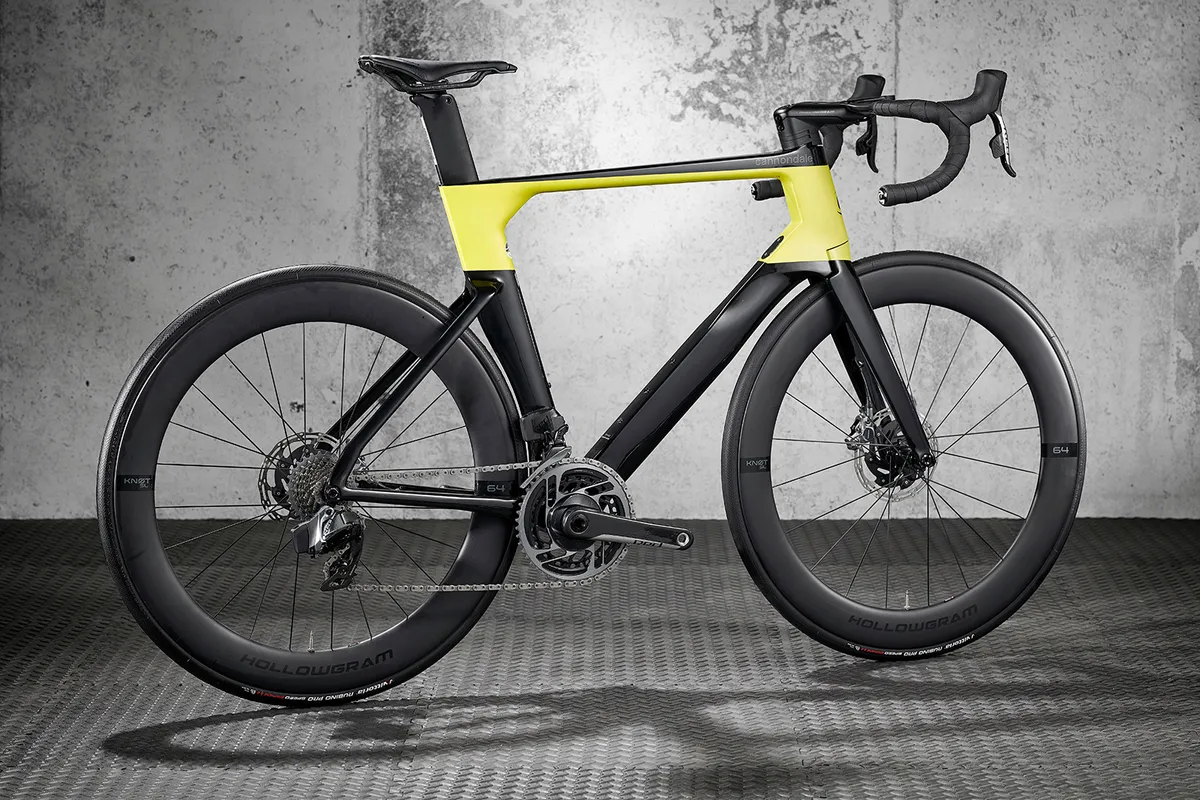
- £10,500 / $12,500 as tested
- Still one of the fastest bikes in the world
- Nimble handling and a comfortable ride
This Cannondale SystemSix is an incredibly fast bike that left us feeling other brands are still playing catch-up with Cannondale when it comes to creating aero bikes.
The Hi-Mod frameset is Cannondale's stiffest carbon fibre, and despite the stiffness and aero tubing, we found this to be a remarkably comfortable bike to ride.
This bike has a halo-spec with a SRAM eTap AXS groupset, 64mm-deep carbon wheels and Cannondale's two-piece aero KNOT handlebar, which still allows for plenty of adjustment.
The price is high, but when you compare it to other bikes of this spec it's competitive, and there is always the Cannondale SystemSix Carbon Ultegra.
Canyon Aeroad CF SLX 7 Disc eTap
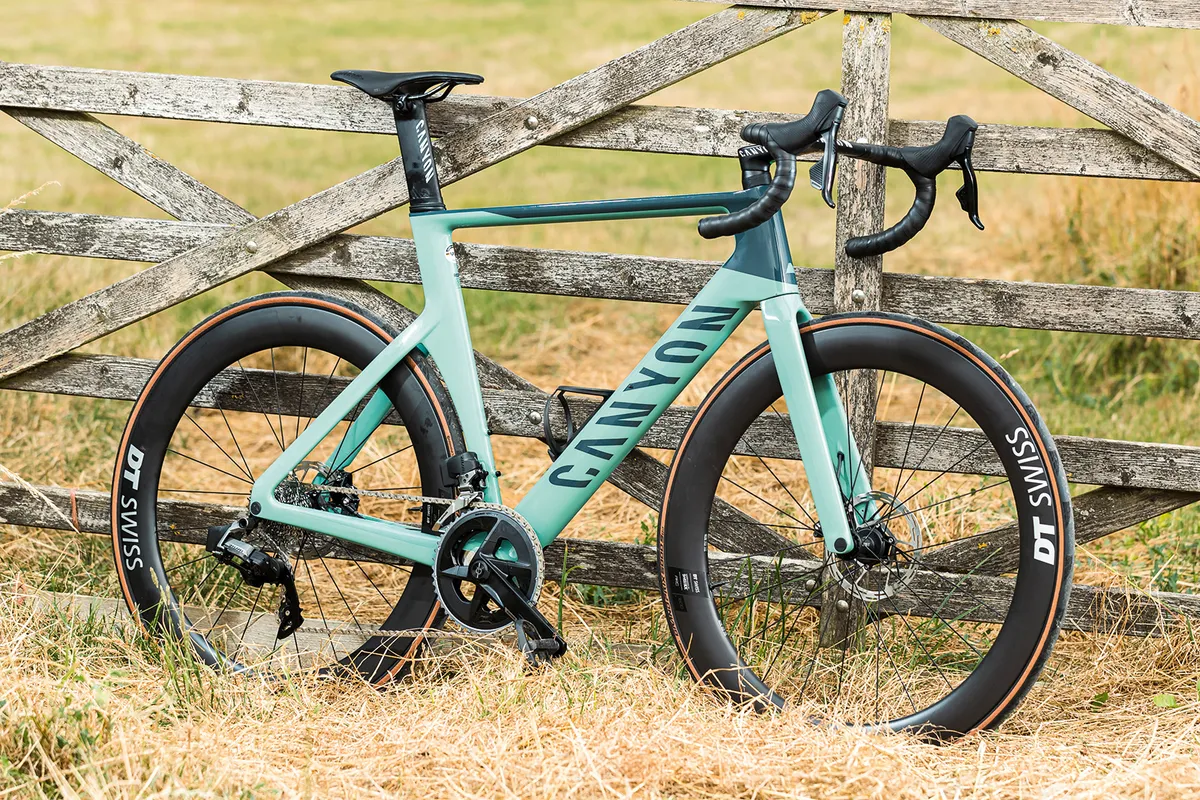
- £4,949 / €4,999 / AU$7,399 as tested (CF SLX 8.0 Disc eTap $7,499 in US)
- Great spec with SRAM Rival eTap and a power meter
- Superb ride that's fast but comfortable
The latest Canyon Aeroad is a superb ride: lightning-fast and efficient but still comfortable enough over broken surfaces, with a 28mm rear and 25mm front tyre helping smooth things out.
The component list on this model includes SRAM Rival eTap AXS complete with (single-sided) power meter and 50mm-deep DT Swiss carbon wheels.
Canyon's clever three-piece bar makes width adjustment and travelling with the bike easier. The 8.3kg weight for the size large is competitive too. We did get some front-brake rub; it was easily fixed, but with Canyon, you don't have the benefit of a shop to help if you need to tweak things.
Cervélo S5
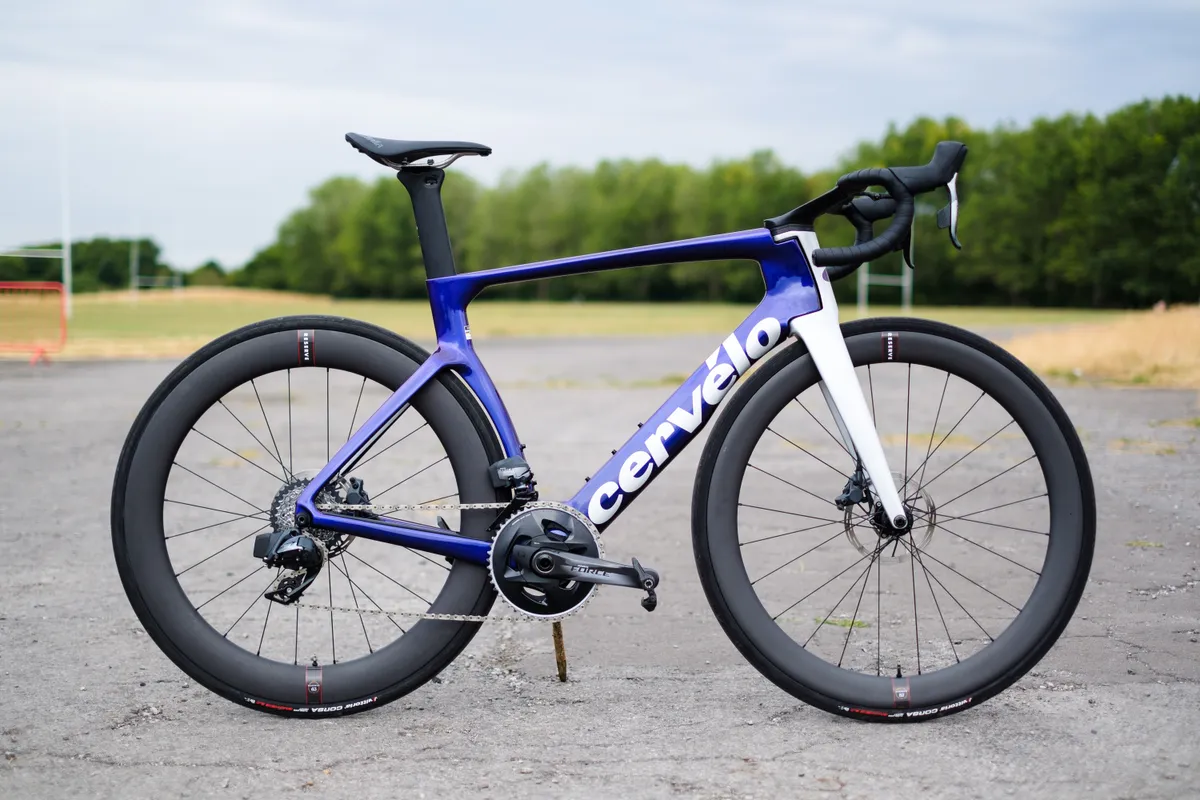
- £9,599 / $9,000 / €10,199 as tested
- Wide tyres for a comfortable ride
- Fast, sharp, responsive ride feel
Cervélo has made some subtle changes to the S5 with the latest model, announced in July 2022. The tube shapes have been tweaked to make them a little more aero, the front-end design has been simplified and made easier to adjust and there's 6mm wider clearance, so you can fit tyres up to 34mm.
The result is a bike that feels incredibly fast but also smooth, with the fitted nominally 28mm tyres measuring 31.7mm. It's also really sharp-handling, planted at speed and still firm enough to respond immediately to pedal input.
The S5 isn't a light bike though, at 8.2kg for a size 56cm, and there's not much fore and aft saddle adjustability, although seatposts with different setback are available.
Cervélo Soloist Ultegra Di2
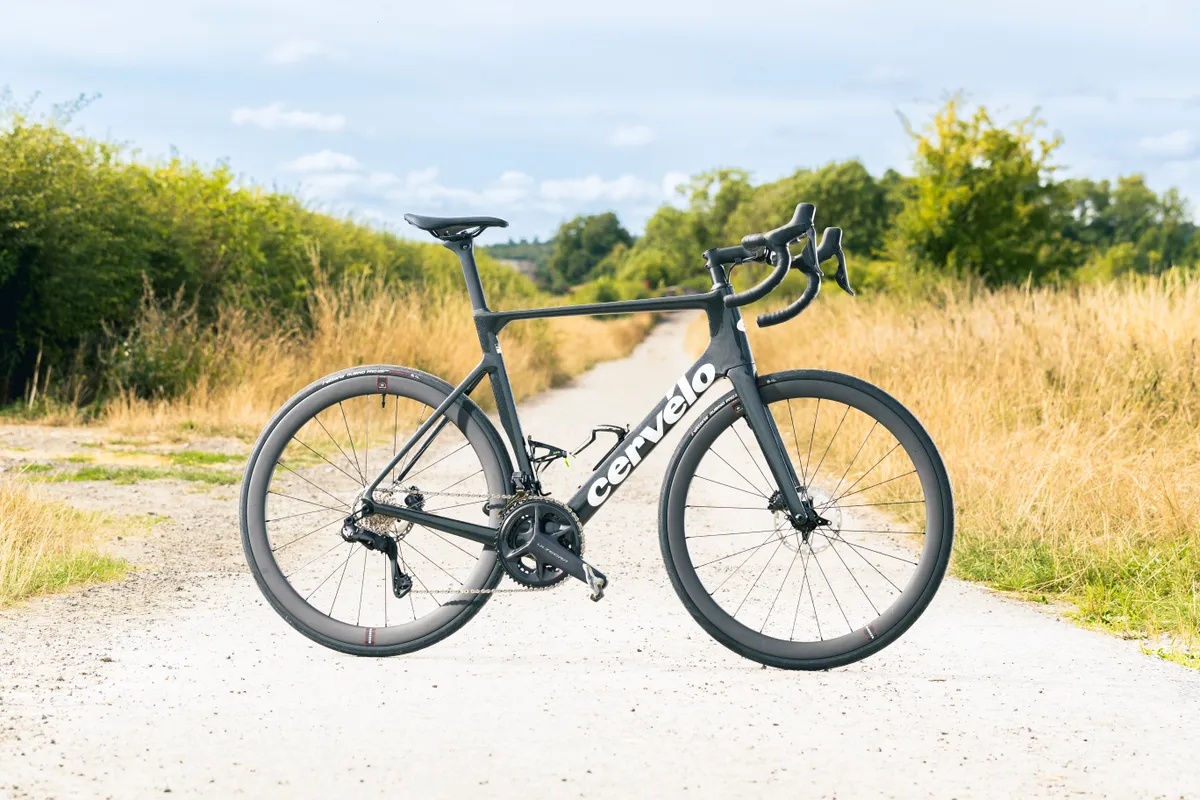
- £6,800 / $6,800 as tested
- Balance of speed and comfort, but some rivals are lighter
- A few spec concessions on this model
The Cervélo Soloist was the original aero bike, released in 2002, and the Canadian company has now resurrected the Soloist name 20 years later.
With the S5 pitched as Cervélo's pro-level aero bike, the Soloist is aimed at speed-hungry amateurs, with a (slightly) more affordable price and all-round flavour. It's claimed to be lighter than the S5 and more aerodynamic than the R5, and offers clearance for 34mm tyres.
And the result on the road? The Cervélo Soloist Ultegra Di2 is a very comfortable and fast aero-optimised racer deserving of the Soloist name. Sure, it may give up speed and weight to other Cervélo bikes, but if you want an aero-influenced bike that offers a bit of everything, this is a contender.
Cube Litening SLT C:68X SL
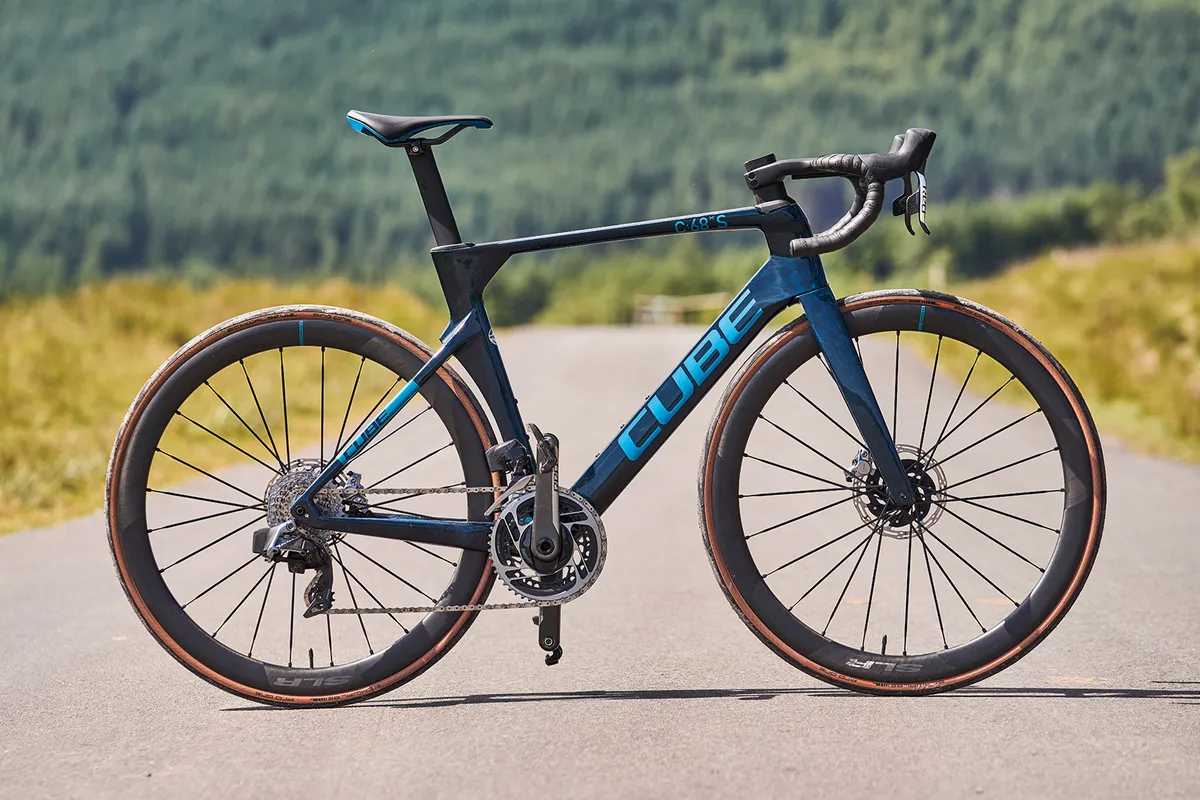
- £8,099 / €6,899 as tested
- Fast with agile handling
- High-spec with quality bespoke components
Cube's Litening range includes this aero-focused frame (renamed the Litening Aero since our test) and the Litening AIR, launched in August 2022 as a slimmed-down, lightweight frame for riders who want an all-rounder with aero touches.
Back to our test bike, and the 7.54kg weight is still impressive for an aero machine, helped by the high-spec SRAM Red eTap build and Mavic Cosmic SLR 45 Disc wheels.
It offers straight-line speed in abundance, making it fast and exciting to ride. A single-piece bar-stem with a low frontal profile helps the bike cut through the wind.
Factor Ostro VAM
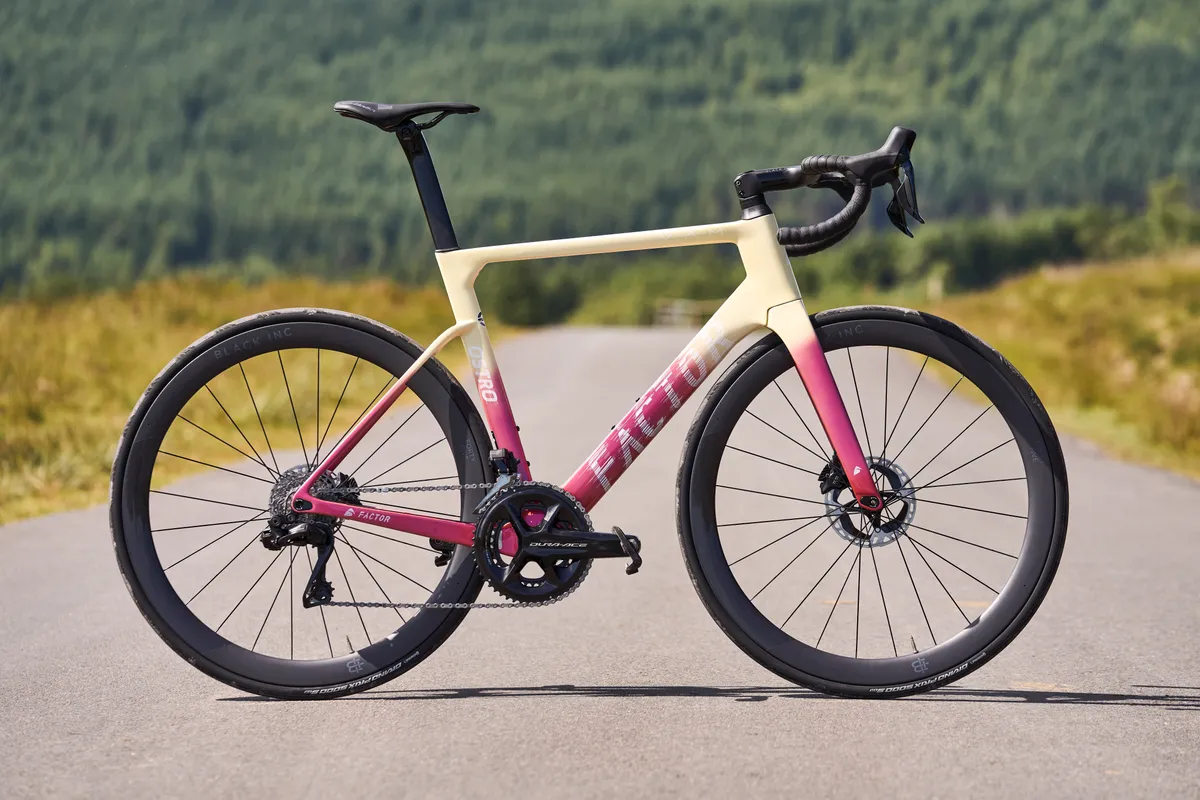
- £9,450 / $11,499 as tested
- Wide tyre clearance and light weight
- Plenty of comfort for broken roads
An all-rounder with an aero edge, rather than a full-on aero bike, the Factor Ostro VAM manages to mix aerodynamics with a 7.4kg weight for the tested size 56 and clearance for 32mm tyres.
There's a proprietary bar-stem from Factor's Black Inc component brand, although you can swap this out for a standard model. The 45mm-deep carbon wheels come from Black Inc as well.
It's a bike that feels composed and confidence-inspiring, with fast steering but predictable handling at speed and enough comfort to handle broken roads.
Felt AR Ultegra Di2
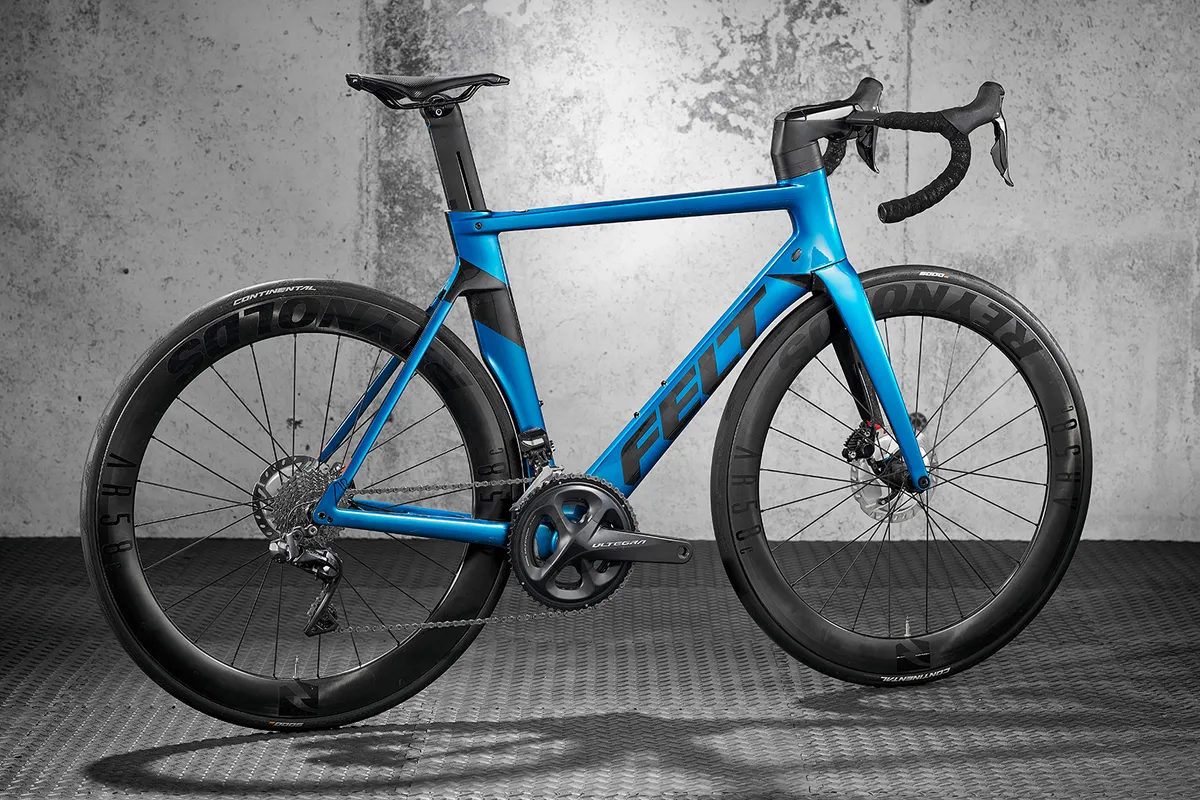
- £6,299 / $6,999 / €6,999 as tested
- Fast, user-friendly and with an excellent spec
- Internal routing limits handlebar-height adjustment
Felt claims the AR Ultegra Di2 is 9.4 per cent more aerodynamic than its predecessor, and there's no denying that out on the road you can feel the aero difference over a more orthodox road bike. It isn't as light as other aero road bikes, but this doesn't get in the way of the Felt being incredibly fun to ride.
When it comes to spec, Felt has done a great job with a near-faultless package including carbon finishing kit, an Ultegra Di2 groupset and Reynolds wheels with Continental GP5000 clincher tyres.
While the internal cabling looks clean and aids aero performance, it leads to some handlebar height-adjustment issues, which is worth bearing in mind.
Giant Propel Advanced Pro 0 AXS
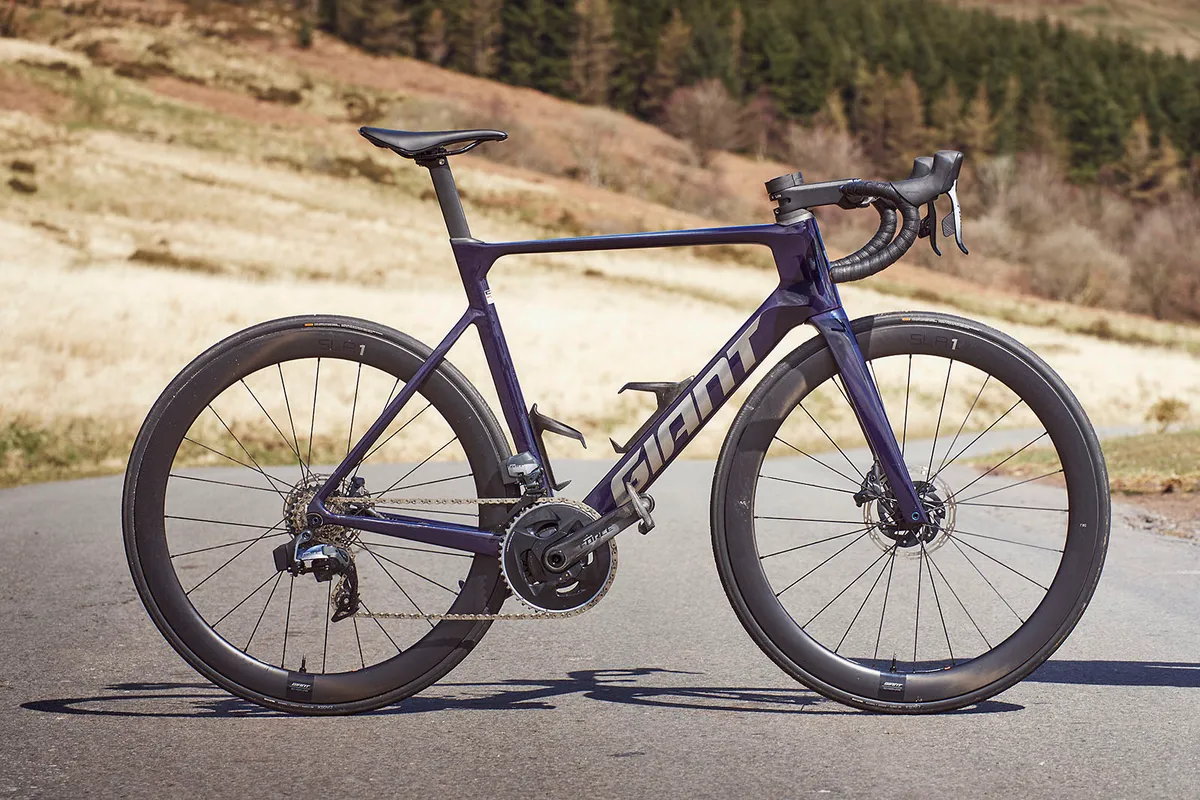
- £6,399/$8,000/€6,900/AU$8,499 as tested
- Blends low weight and aerodynamics
- Assured handling
The Giant Propel Advanced Pro 0 AXS costs half as much as the WorldTour-level Advanced Pro SL and gives away little in terms of performance.
Our aero Bike of the Year 2023 is a brilliantly versatile aero road bike due to its balance of weight, speed and handling.
Not all of Giant's spec choices hit the mark, but the Propel Advanced Pro 0 AXS's mid-range price could leave you with cash for upgrades.
Giant Propel Advanced SL 0
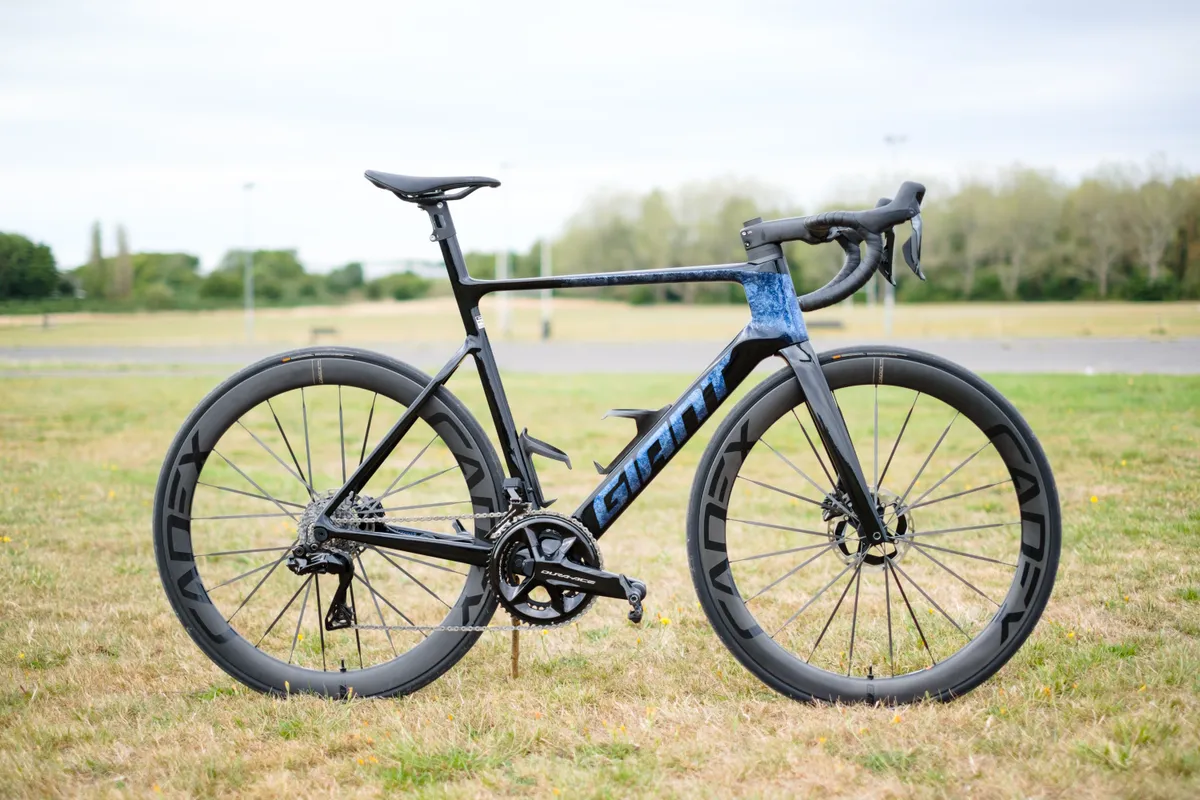
- £11,999 / $12,500 / €12,000 / AU$14,000 as tested
- Very light for an aero bike at 6.9kg
- Easy maintenance and adjustment
At 6.9kg, the Giant Propel Advanced SL 0 is exceptionally lightweight for an aero bike. Giant claims it's also more aero than its predecessor.
It's designed to be easy to work on, although the integrated seatmast means that once cut there's only a few centimetres of saddle-height adjustment.
The bike rolls on 25mm tyres, although there's room for 30mm, but despite this the ride is comfortable. The two-part bar and stem make for adjustability, although Giant doesn't offer bars under 40cm width.
Lapierre Aircode DRS 8.0
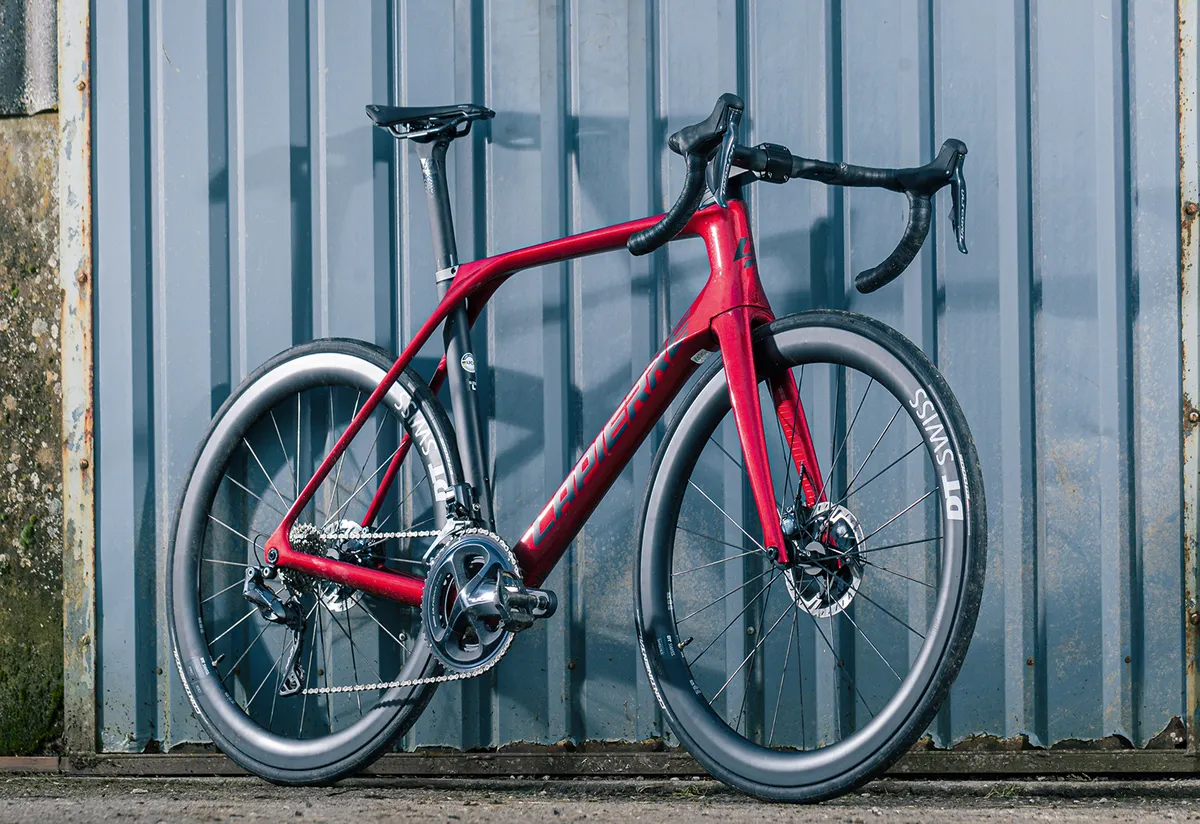
- £6,300 as tested
- Fast with accurate handling
- Superbly equipped
Now in its third generation, the Lapierre Aircode DRS 8.0 follows the trends for aero bikes with the integration of disc brakes and hidden cables – not forgetting clearance for 28mm tyres.
The bike also addresses weight and comfort, two issues that are often associated with aero bikes, with a 900g frame and a carbon layup that's said to improve frame compliance.
Despite the aggressive geometry that screams urgency as soon as you get on the bike, there's no denying it's comfortable to ride. It's a real technical achievement and the spec does it justice with Ultegra Di2 gearing and a DT Swiss wheelset. Lapierre even throws in some bolt-on aero bars for extra versatility and value for money.
Merida Reacto 6000

- £2,800 as tested
- Great value for money
- Excellent frameset but wheels are heavy and tyres are average
The unisex Merida Reacto 6000 is a great-value aero road bike with excellent handling, and a stiff and fast frameset that shares its geometry with the Merida Reacto Team-E.
It puts you in an aggressive position, which makes sense for a bike that is built for speed. This could be tiring on your arms and hands on long rides, but we had no issues during testing.
The spec is good, but there are compromises. It has a cockpit that bucks the trend by sticking with a non-integrated design, which might not be desirable for some, but others will find it very practical.
There is an Ultegra groupset that performs as well as ever, but the wheels are on the heavy side and you would probably want to upgrade the tyres right away.
We've also reviewed the Merida Reacto 4000, equipped with Shimano 105 and earning the same 4.5-star rating.
Orbea Orca Aero M10iLTD
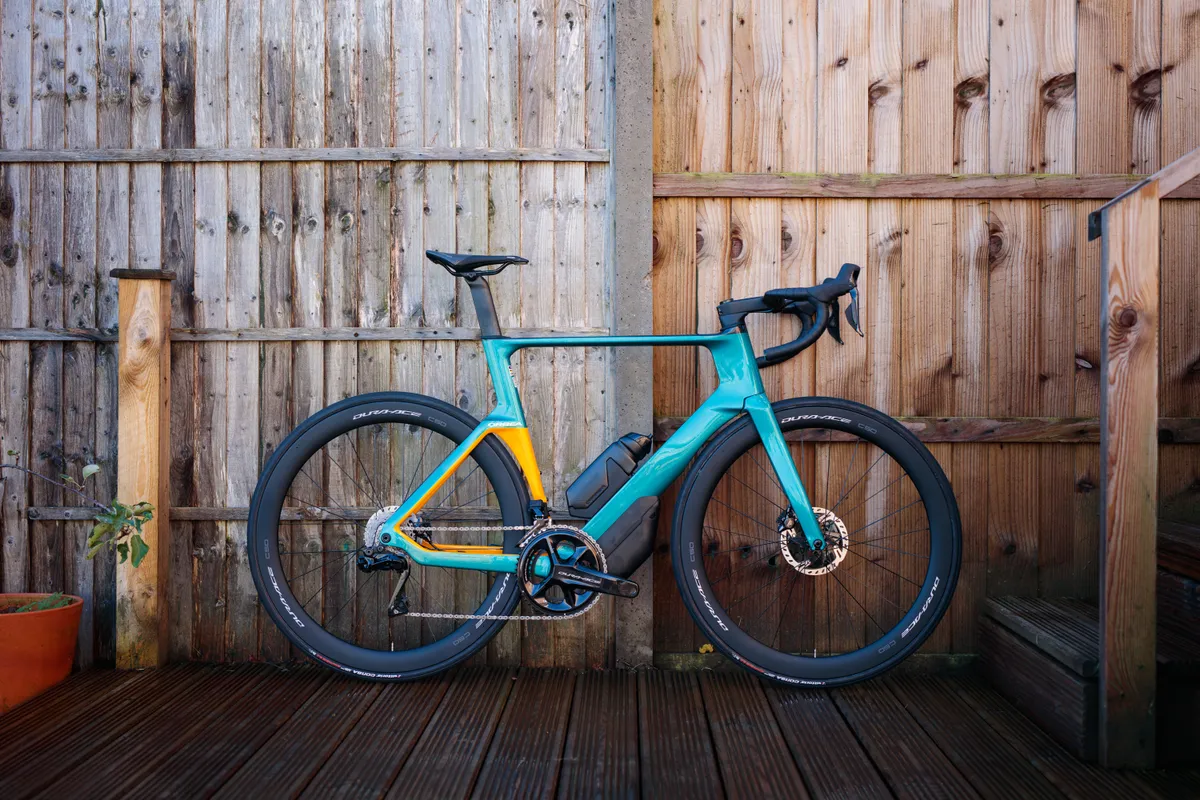
- Fast, comfortable ride
- Clever add-ons for those not racing
- A bit heavier than the competition
Orbea claims the latest iteration of its Orca Aero saves 15 watts over its predecessor. It feels fast, but is still comfortable and adjustable, and the spec leaves no reason for swap-outs. The bike comes with an optional aero bottle and storage under the down tube, the latter not UCI-legal.
There's a nicely integrated bar, although we found the sharp trailing edge hit our wrists when sprinting. The bike is compatible with a standard bar and stem though.
The Orbea is a bit on the heavy side too at 8.3kg, although we didn't notice this when out riding and we were impressed by the Orca's comfort levels.
Ribble Ultra SL R Enthusiast
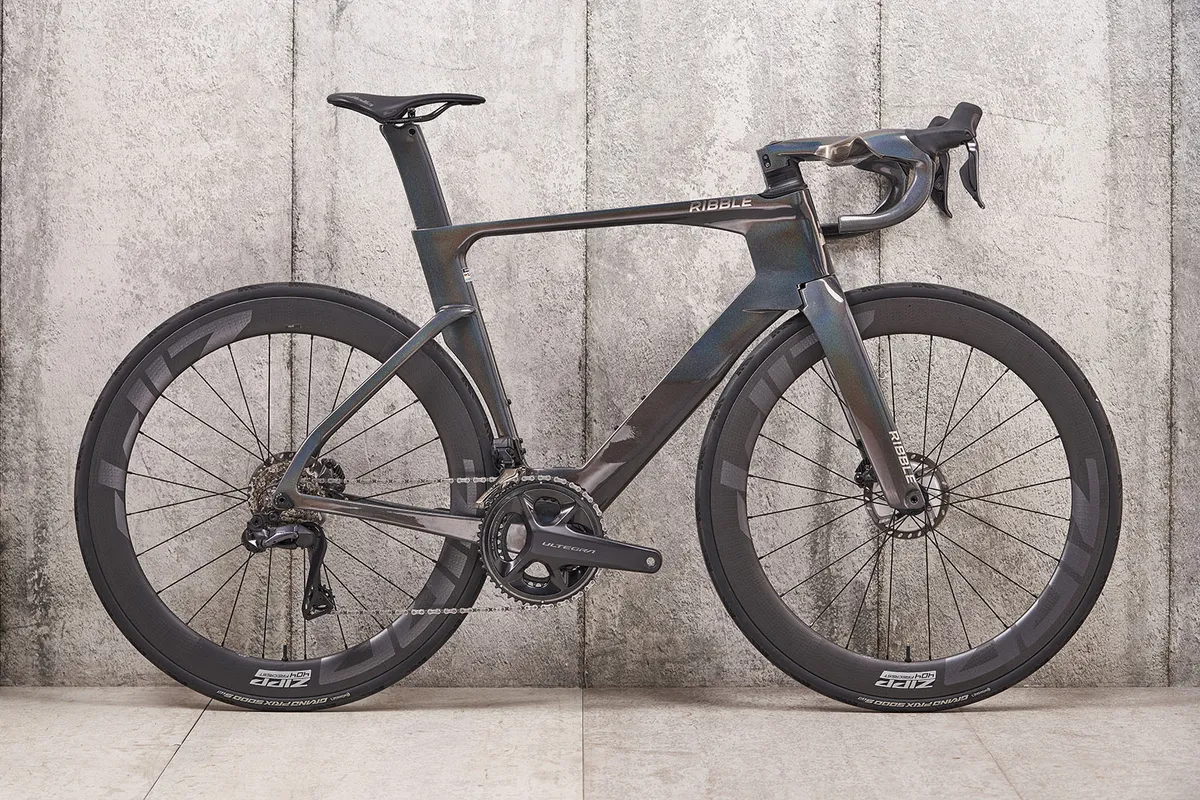
- £6,599 as tested
- Fearsomely fast
- Well priced
The Ribble Ultra SL R Enthusiast's eye-catching aero design translates into visceral speed with minimal concession to overall practicality.
If you just want to ride fast, you'd be hard pressed to find a better aero road bike for the money.
However, an integrated power meter would be nice, as would more handlebar size options and a simpler seatpost clamp.
Vitus ZX-1 EVO CRS Ultegra Di2
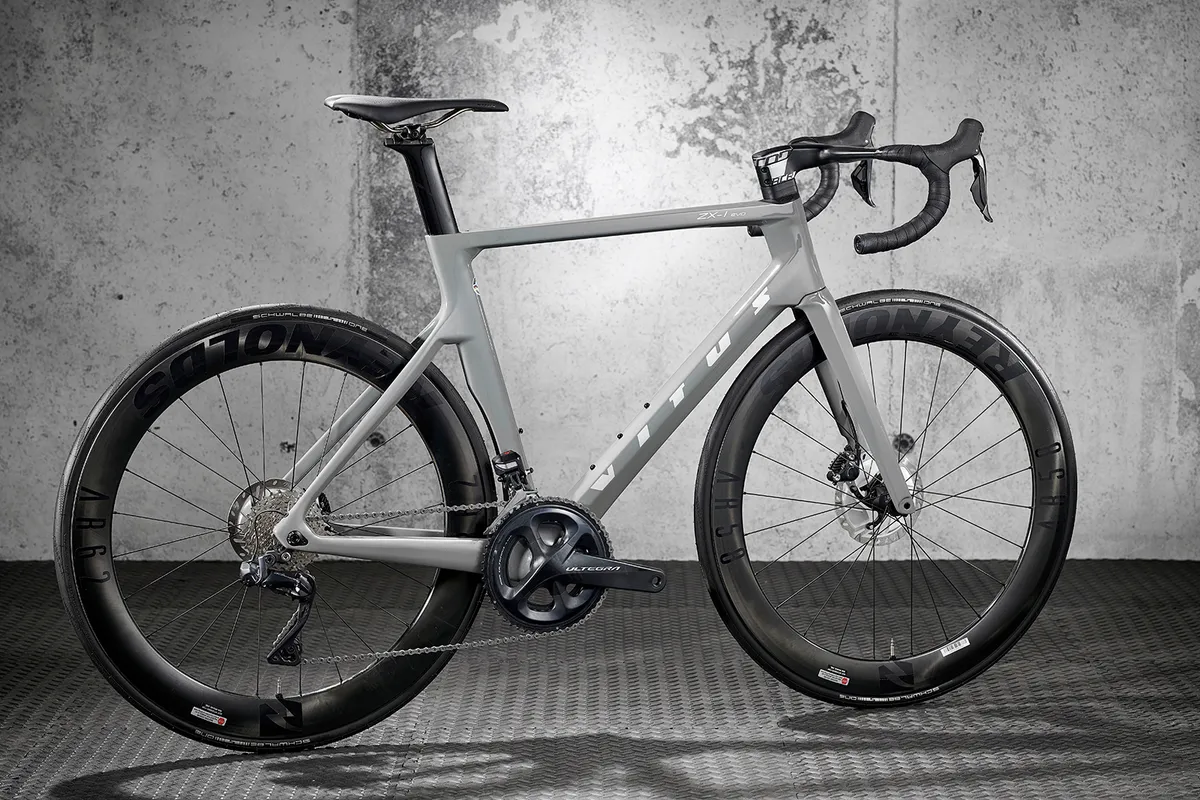
- £3,999 / $5,200 / AU$6,800 / €5,500 as tested
- Incredible-value fast aero bike
- Integrated handlebar rules out front-end fit adjustments
The ZX-1 EVO is Vitus' flagship aero bike, and despite the relatively low price tag, the bike boasts a spec that wouldn't be out of place on a much more expensive ride, with Ultegra Di2, deep-section wheels and aero-profiled finishing kit.
The bike is incredible value for money, then, and it doesn't disappoint on the road either with a joyous ride. The geometry is racy, but it isn't the most aggressive, making this bike a good choice if you value stability.
The only thing to look out for is the integrated cockpit, which doesn't allow for front-end fit adjustments, so it might be wise to try before you buy.
We've also tested the mechanical Shimano 105 spec of the Vitus ZX-1 EVO. Priced at £2,800, it's great value for an aero bike.
Cervélo S3 Disc Ultegra

- £3,999 / $5,000 as tested
- Awesome aero experience
- Choppy ride on rough surfaces
Cervélo invented the aero road bike, and the S3 Disc builds on the brand’s 25 years of aero knowledge with a claimed 13 watts less drag and a 68g weight saving on its predecessor. Cables all run internally, despite the S3 having a separate bar and stem for adjustability.
The wheelbase is short even on larger-sized frames, leading to sharp handling, although the bike would benefit from an upgrade from the alloy DT Swiss P1800 wheels. Run tubed, they lead to a rather choppy ride over uneven road surfaces; a swap to 28mm tyres might help.
Orro Venturi Evo 105

- £2,100/ $2,667 / €2,457 as tested
- Tunable spec
- Reasonable price
- Some flex in the front end
At £2,100, the Orro Venturi Evo is a British aero bike that won’t break the bank. It looks great too, with space for 28mm tyres and an aggressive racing position. We reckon it rolls with the best on flatter undulating roads, although there’s a little front-end flex when pushed hard.
You can custom-tune the spec to your requirements, and alongside a Shimano 105 R7000 groupset, the test bike came with Vision Team 30 aero alloy wheels and fast-rolling Continental tyres. It’s a nice package at a nice price.
Scott Foil RC Pro (2023)

- £10,499 / $10,999 / €10,499 as tested
- More aero than the previous Foil
- Plenty of comfort, particularly at the rear
The latest Scott Foil has a claimed increase of 16 watts in its aero efficiency at 40kph over its long-running predecessor, thanks to wind tunnel tuning with Simon Smart, the man who's also behind the ENVE SES wheel range. At 7.4kg, the new Foil is light too, despite having deeper aero sections than the previous bike.
The frame geometry is the same as the Scott Addict RC, offering sharp, predictable handling at high speeds, but not at the expense of comfort, particularly at the saddle. That's thanks to a three-piece seatpost design with a rubber insert and a wider 28mm rear tyre.
It's a bike that's fast, lightweight and comfortable.
Tifosi Auriga Chorus Disc
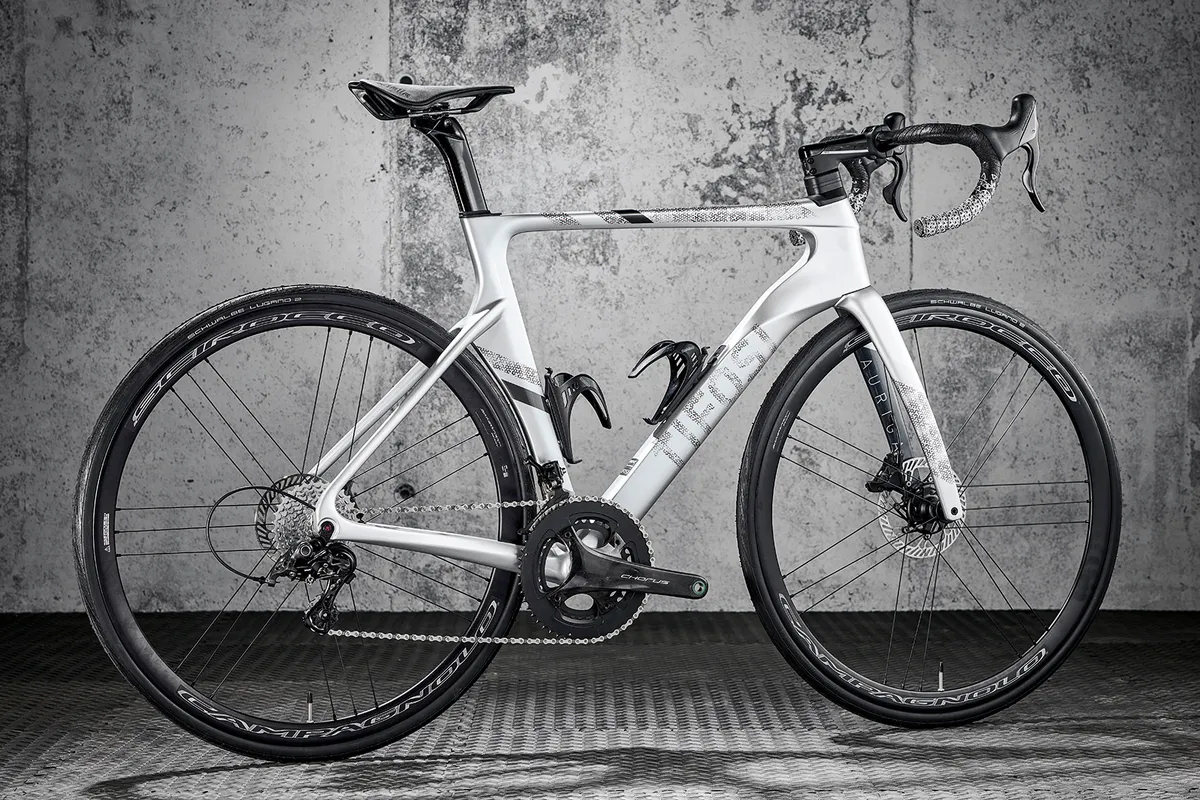
- £3,499 as tested
- Long and low ride position
- Better tyre rubber would up the Auriga's game
The Tifosi Auriga is a fast bike in a straight line, with a stiff frame, and it handles direction changes with admirable agility. Despite its 9kg-plus weight, it climbs well too.
The Auriga frame's geometry puts you in a long and low position, which should cut down your frontal profile for aero benefits, while the FSA ACR system allows cables and hoses to be run internally, also lowering drag.
Tifosi claims 28mm tyre clearance, but we think there's room for more and the Auriga is equipped with a Campagnolo Chorus mechanical/hydraulic groupset, which we enjoyed. The tyres are in need of a swap-out though.
Trek Madone SLR 9 eTap (2023)
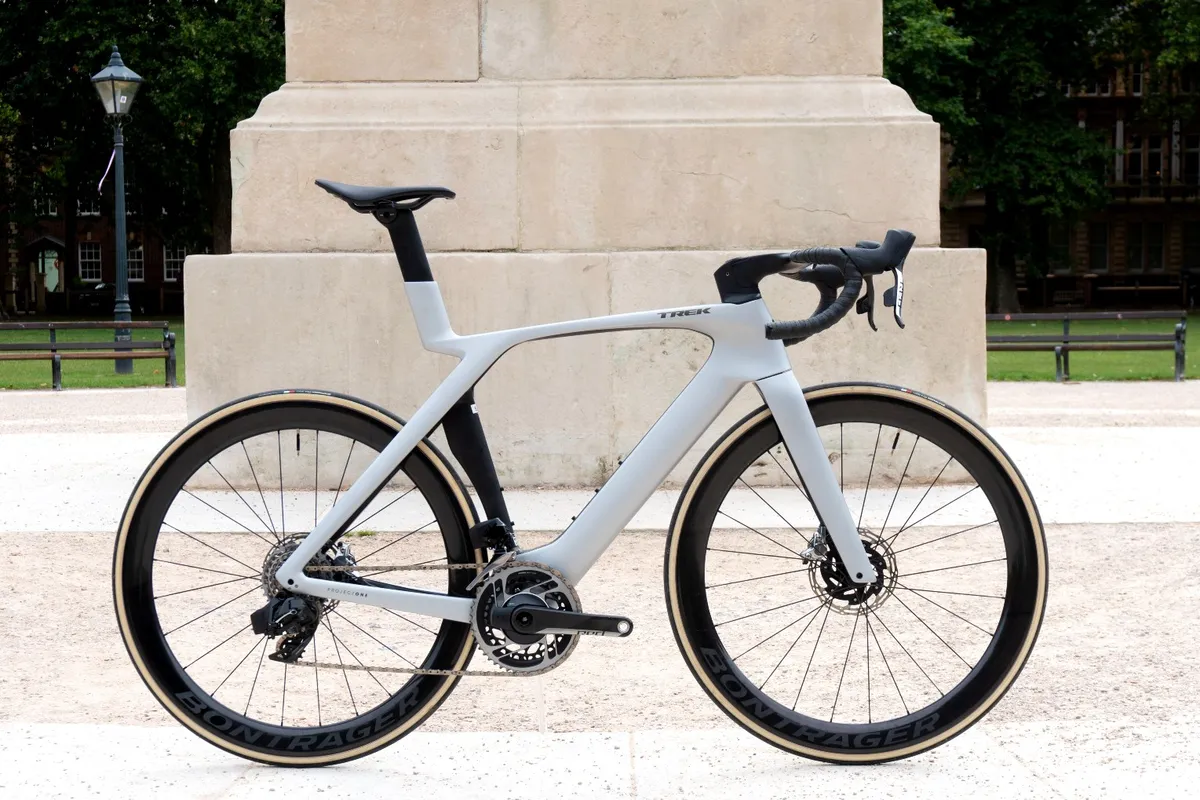
- £13,800 / $13,199 / €14,999/ AU$17,999 as tested
- Very fast, very expensive
- Slightly twitchy in crosswinds
With distinctive, aggressive looks, the latest Trek Madone SLR is every inch the aero race bike.
The distinctive IsoFlow seat tube is designed to funnel airflow into the area behind the rider, improving aerodynamics while retaining some of the comfort from the old IsoSpeed system.
The rigid frame and sharp handling make for fast riding that's predictable, in most circumstances, and inspires confidence. We did find the Madone somewhat sensitive to crosswinds though, probably down to the slightly angular Bontrager Aeolus RSL 51 wheel rims. The fitted 25mm tyres felt a little narrow too, and they're not tubeless.
Wilier Triestina Cento10 SL Ultegra Di2
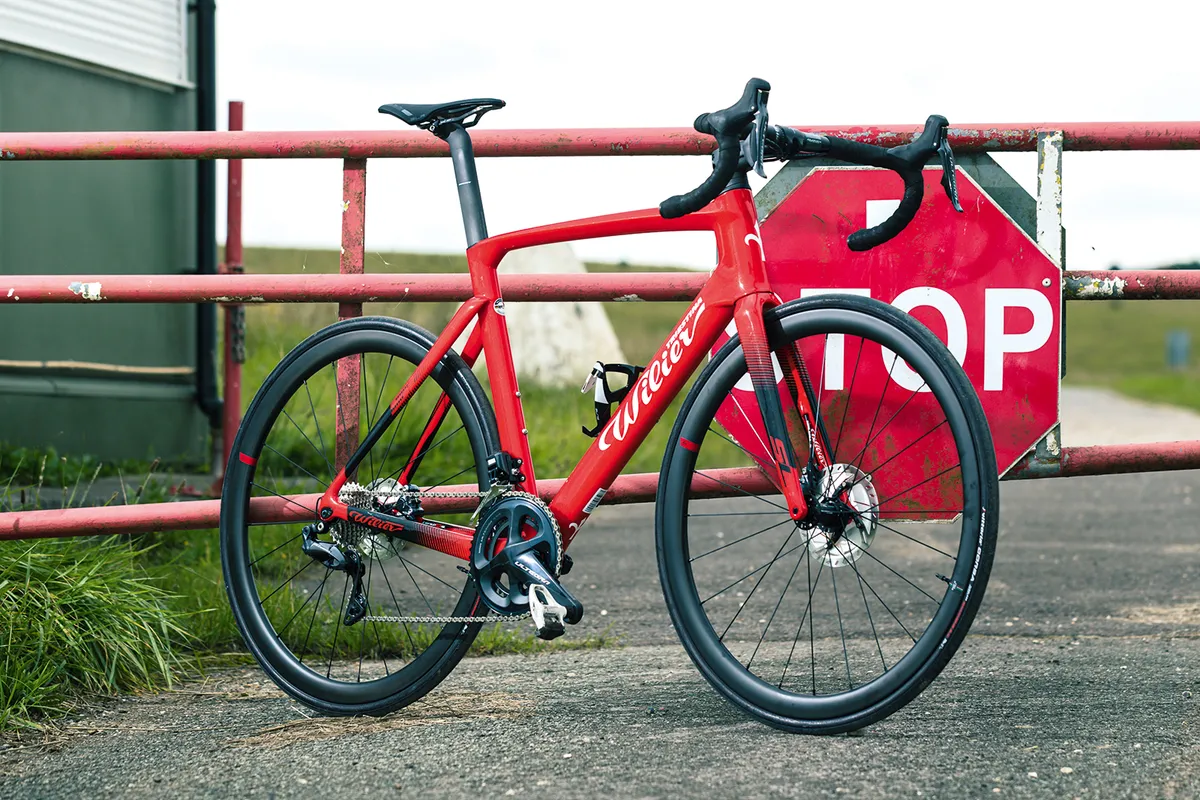
- £5,540 / €5,600 as tested
- Sharp handling
- Firmer ride than some
The Cento10 SL is a lower-priced version of Wilier's previous flagship road bike, the Cento10 Pro (the Filante is now its top aero racer).
The SL shares much in common with the Pro, using the same moulds for the frame, and it feels like a masterstroke because the bike is almost indistinguishable from a superbike, at a much more affordable cost.
The bike is firmer than some, but it's a dream to ride with a long and low position that feels balanced when cornering fast, and handling that puts other aero bikes to shame.
The equipment spec is high, too, with Shimano Ultegra Di2, Wilier's own carbon wheels and a Selle Italia SLR Boost Carbonio saddle, but the 25mm tyres might be on the slim side for some.
Buyer’s guide to aero road bikes: what to look for
What is an aero bike?
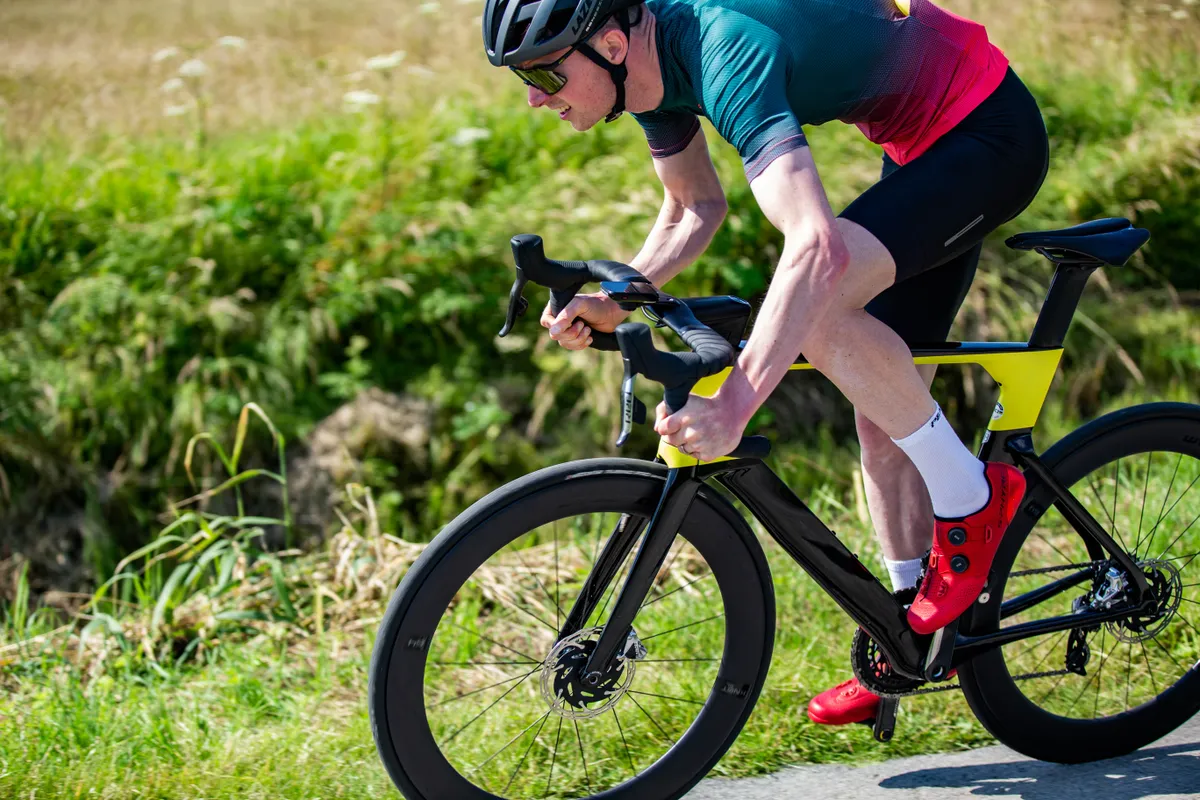
An aero bike prioritises aerodynamic features, aiming to give you a little free speed as you ride.
That starts with aero tube profiles, usually a truncated aerofoil design (also known as a Kammtail), with a smoothly curving leading edge and an abruptly chopped-off rear. The idea is to trick the wind into following the drag-saving shape of a full aerofoil while saving weight and maintaining frame stiffness.
Truncated shapes are particularly evident on the down tube and seat tube, but on dedicated aero bikes usually carry over to the head tube, fork blades, seatpost and the rest of the frame.
The latest aero bikes are all about integration and it’s rare to see exposed cables at the front end of the bike. The trick for bike manufacturers is providing that integration without sacrificing fit or everyday usability – some brands do this better than others.
Aero bikes will sometimes have more aggressive road bike geometry than all-round race bikes – and certainly more aggressive than endurance road bikes or sportive bikes. That normally means a longer, lower position that allows the rider to hunker down over the bar, reducing frontal profile for less wind resistance.
An aero bike arguably needs deep-section aero wheels to complete the deal. The best will come with them, but some makers fit more basic wheelsets (usually to keep the price down), expecting you to buy your own.
Aero bike vs road bike
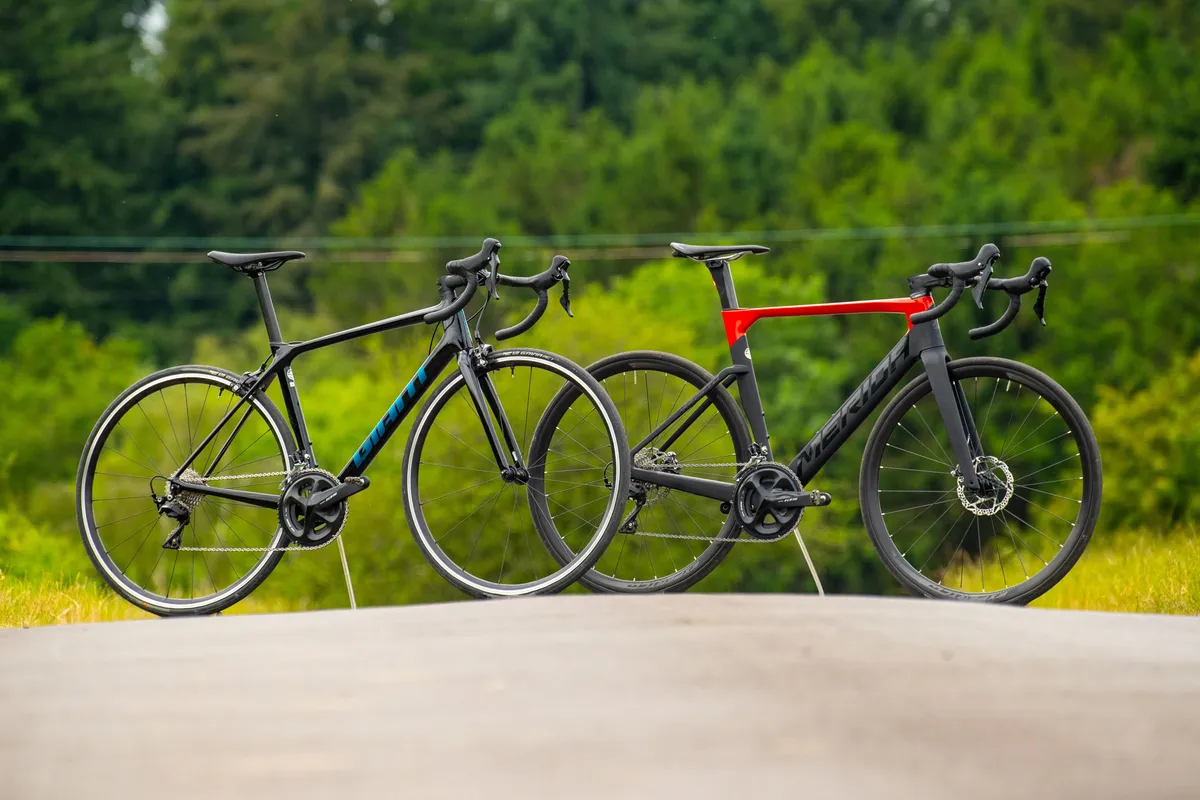
It looks as if the era of the specialist aero bike may be passing. As we’ve already mentioned, the latest generation of lightweight/all-rounder race bikes increasingly incorporates aero features.
Take the Specialized Tarmac SL7 road bike, for example. It’s almost as aero as the brand’s Venge specialist aero bike, which has now been removed from the range with Specialized adopting a ‘One bike to rule them all’ philosophy.
Other formerly conventional road bikes that have had an aero makeover include the Cannondale SuperSix (overall winner of our Bike of the Year test in 2020), the Trek Emonda and the Scott Addict, with all these brands promoting aero benefits in a lightweight package.
As with any bike purchase, it’s a case of weighing up the options and choosing the right machine for your needs. If you’re looking for more of an all-rounder with an aero edge, there are now plenty of options out there. Equally, if all-out speed is your thing, a dedicated aero bike will have that ace up its sleeve.
What is the fastest aero bike?
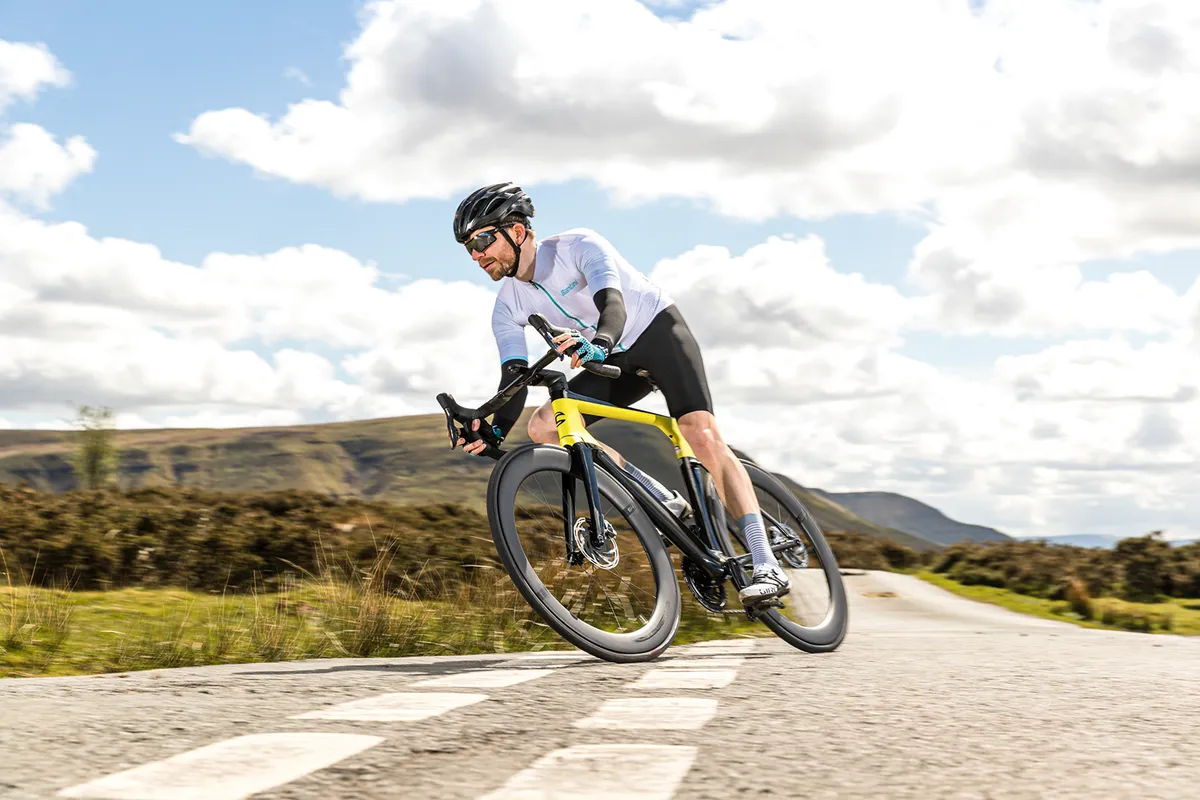
Almost every aero bike will be accompanied by some kind of claim about how the bike is faster than its predecessor or competitors. Aero gains are often quoted as seconds saved over 40km at 45kph or such, but do you regularly ride at that speed? The laws of physics mean that if your average speed is half that, you’ll reap an eighth of that figure.
With around 80 per cent of wind resistance down to you, rather than the bike, there is only so much help an aero bike can provide. That’s before we get to the rider’s engine, too. If speed is your thing, here are five ways you can ride faster for free.
Having said that, few riding experiences beat the feeling of free speed when riding fast on a sharp-handling aero bike, especially on a rapid downhill or full-gas on a flat or rolling road.
As for the ‘fastest’ aero bike, as ever we’d tread with caution when it comes to manufacturer claims. Sure, you can factor it into your buying decision, but there’s lots more to consider besides, including fit, usability, frame features (for example, tyre clearance) and budget.
Tube shapes
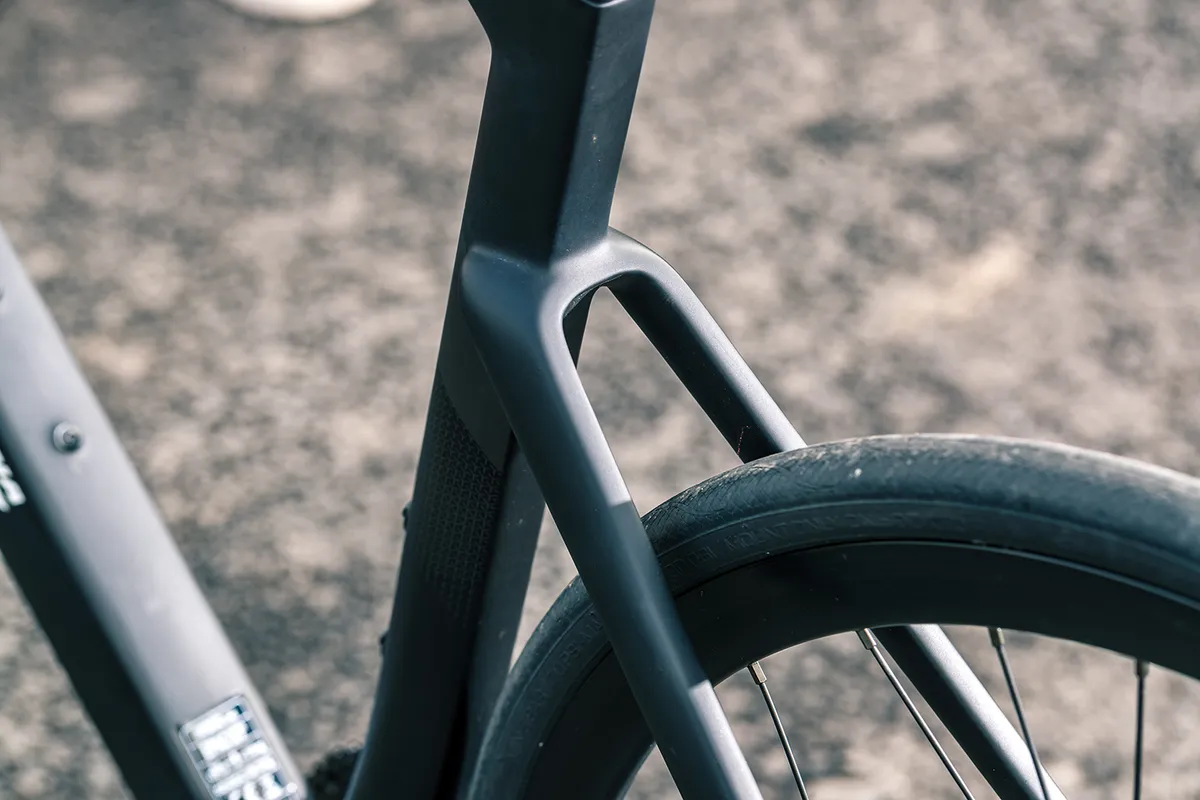
It goes without saying that an aero bike will have aero tube profiles. These are most obvious on the main tubes of the bike, the down tube and the seat tube in particular.
Aero features will likely extend to the seatstays, which are often dropped, hitting the seat tube some way down from its top, as well as being aero in profile. The head tube, fork and seatpost (and its clamp) are also likely to have had the aero treatment.
The first crop of aero road bikes, led by the Cervélo Soloist (which has now made a comeback in 2022), had teardrop-shaped tubes. It’s the classic aerodynamic shape, but the tail adds a lot of weight without much structural benefit, so the frames tended to be heavy. The extended profile could also make for tricky handling in crosswinds.
That’s changed now, with the realisation that a truncated aerofoil (or Kammtail) can be more aerodynamically efficient than a teardrop.
Air forms an eddy behind the cut-off edge of the tube and air flowing past this forms a teardrop shape that’s much longer than the tube. Trek says that although the length of its Kammtail tubing is less than three times its width, it behaves aerodynamically as if it’s eight times the width.
With that in mind, there’s potentially a quadruple benefit from truncated aerofoils: they use less material for a lighter frame, they are more structurally rigid, they produce longer virtual tails to the tubes and they’re less edgy in crosswinds.
Another plus: they make it much easier for manufacturers to produce aero designs that comply with the geometry rules set by the UCI, cycling’s world governing body.
Integration

The new frontier in aero bike design is front-end integration. That means the handlebar and stem are often one piece, with a broad, flat aero shape to the bar. At least some of the brake and gear cables will run internally into the frame, so they’re out of the airflow.
There’s a surprising amount of drag from round cables routed externally. Pinarello claimed burying the cables inside the bar and stem of the Dogma F12 improved aerodynamics by more than 5 per cent relative to its F10 predecessor, which had external cabling (Pinarello has since launched the new Dogma F).
The flip side is that some integrated systems can be difficult to work with, so expect to spend more on maintenance or to deal with more frustration if doing it yourself.
Also, make sure you’re comfortable with the position dictated by a bike’s integrated carbon bar/stem. There are limited size options and adjustability to many integrated systems.
The best integrated cockpits keep everything clean and tidy, hiding the cables from the wind, but still allow for easy servicing and fit adjustments, most likely by keeping the handlebar and stem as two separate units.
Ride quality
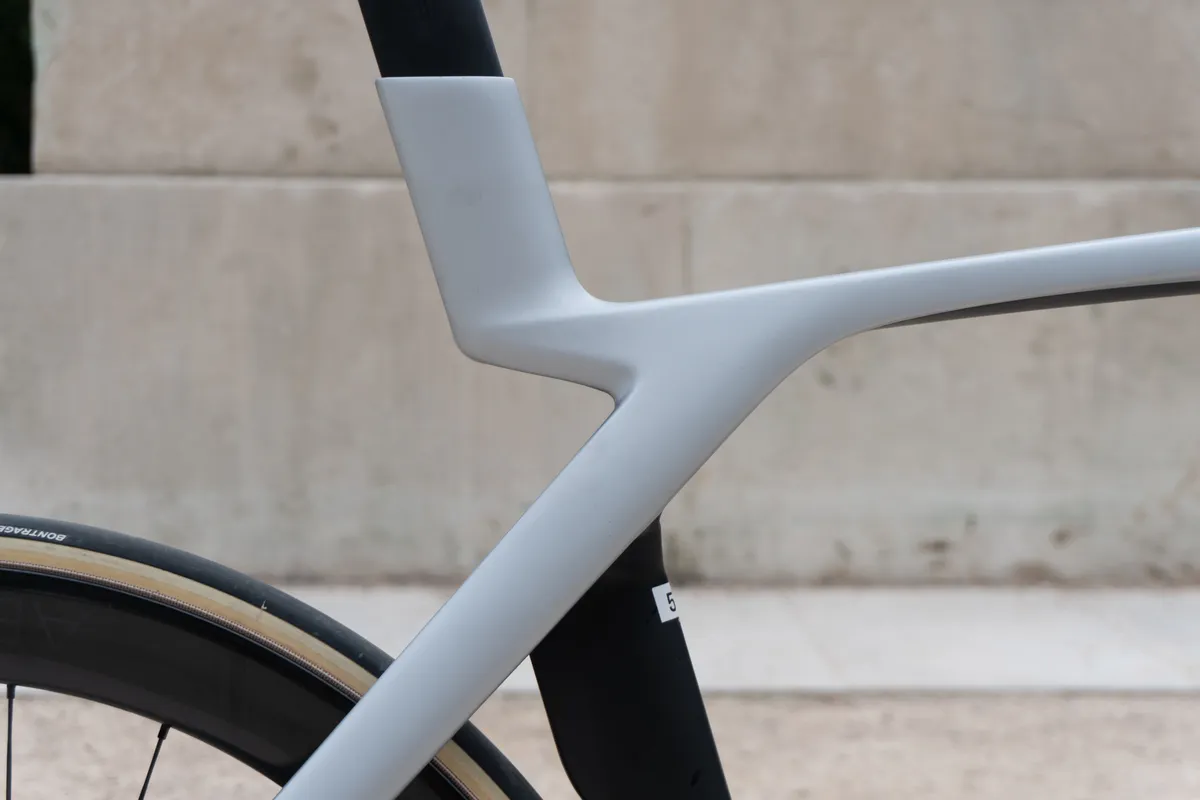
With their chunky tube profiles, aero bikes of old had a (often justified) reputation for a harsh ride.
That’s largely changed with the modern crop of aero bikes, because brands have learned how to design frames for a more comfortable ride without compromising aerodynamics, and road disc brakes have increased tyre clearances – you can now run a 28mm or even 30mm tyre on many of the latest aero bikes.
Nevertheless, it’s something to look out for if you’re thinking of buying an aero bike. It’s worth reading road bike reviews and, ideally, taking a test ride before parting with your cash, especially if you live somewhere with rough roads.
Geometry
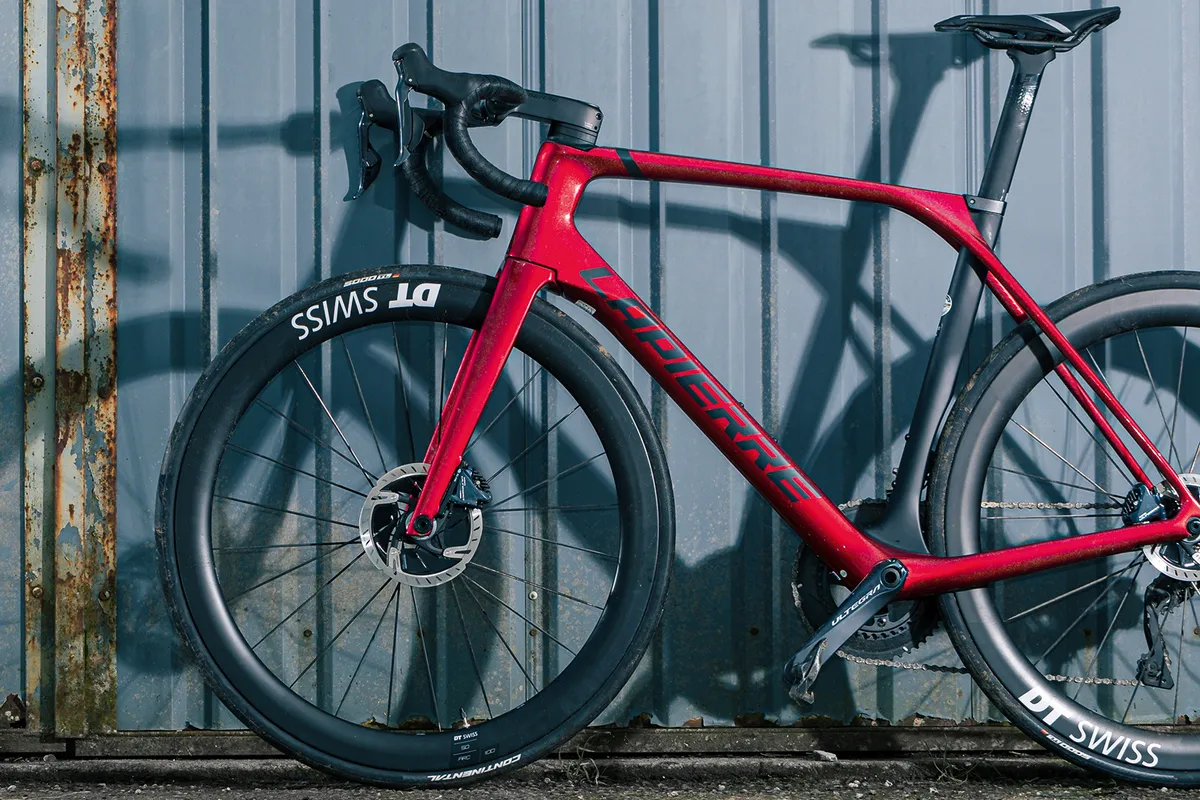
As mentioned above, an aero bike will typically promote a long, low ride position. That’s great for cutting through the wind, but make sure you’ll be comfortable riding an aero bike (or that it offers the adjustability you need) before taking the plunge. Neck, back, shoulder and hand pain can be issues if you’re not very flexible or not used to an aggressive position.
You may adapt to the position, but if you’re not racing you don’t want to end up suffering on your bike to go a little faster – being forced to cut your ride short due to pain or picking up an injury is counter-productive, to say the least.
Weight

Weight used to be a driving factor behind bike design, with a lower weight perceived to result in a faster and better ride. Aero bikes disprove the rule, with many tipping the scale at around 8kg and feeling lightning-quick.
While a lightweight bike might serve you better on long climbs, the weight and performance difference between many more conventional bikes and aero bikes is marginal, and improving your power-to-weight ratio can be one way to offset the difference.
There are also ways to make your road bike lighter if you’re that way inclined.
A lightweight bike might feel more responsive, but geometry and tyre choice arguably have as much impact on the feel of a bike as weight. If you want something that feels responsive and snappy, look for a bike with a short wheelbase and a head tube angle of around 73.5 degrees.
Wheels
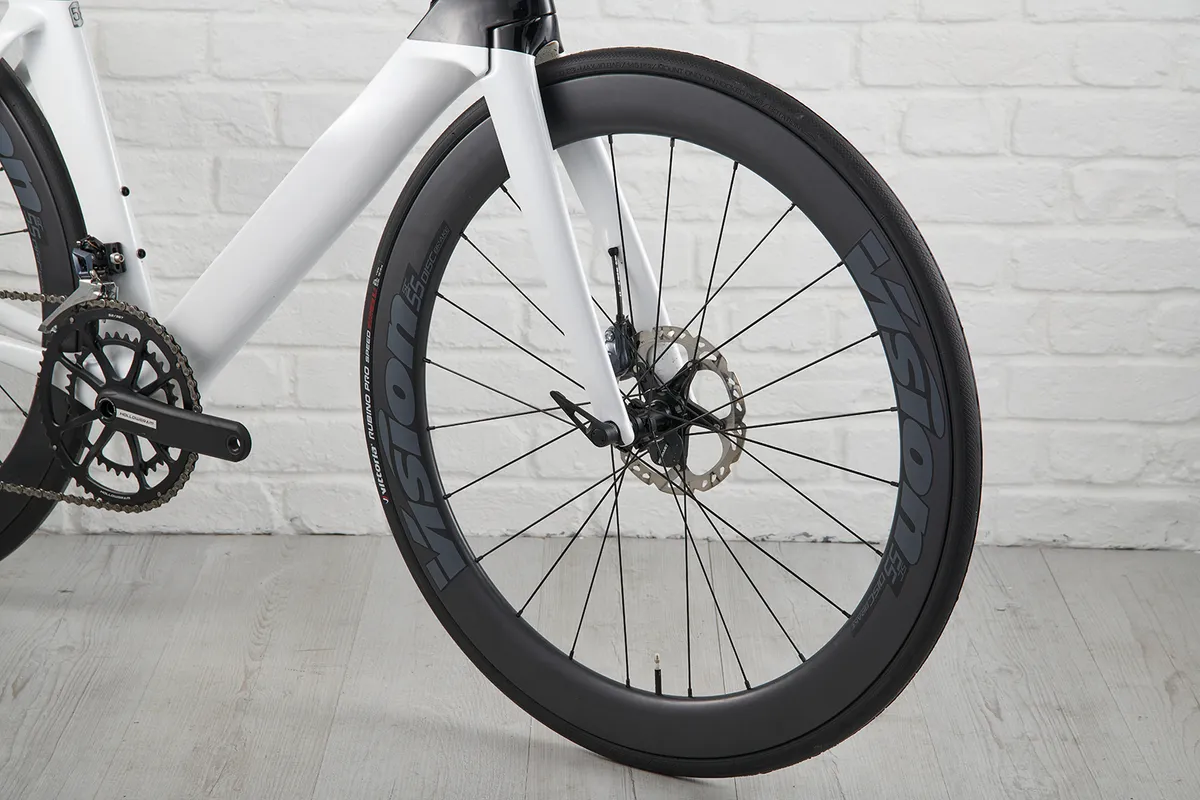
An aero bike needs an aero wheelset to complement – and make the most of – the frame’s aerodynamics. It’s still all too common to find an aero frameset equipped with budget, non-aero wheels. Recognising this, some brands are now fitting wheels worthy of the investment they’ve made in their frames.
Unless you’ve got a set of go-fast wheels already sitting at home, it’s worth looking for a bike that comes with decent deep-section wheels. If not, and you do want to upgrade, budget the best part of £1,000 for a set of the best road bike wheels.
Brakes
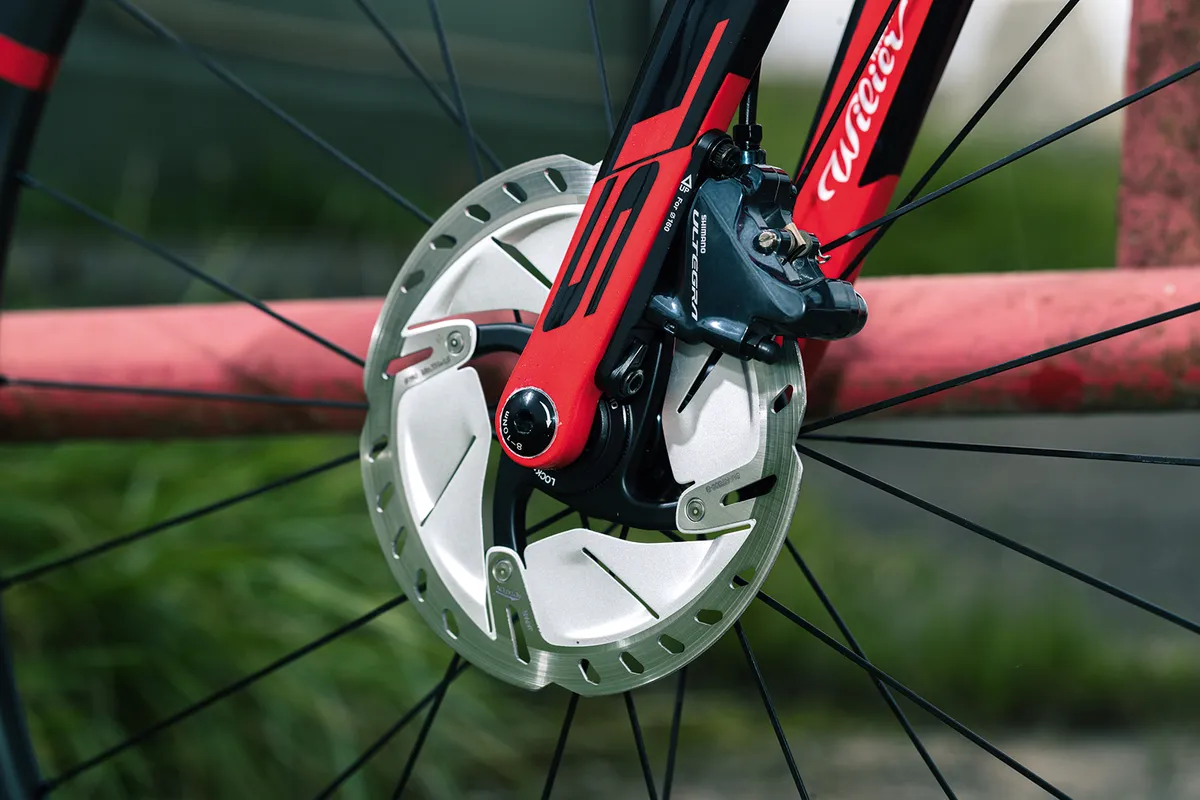
Disc brakes have largely taken over on all new bikes, but rim-brake outliers are still out there, particularly if you’re buying a second-hand bike.
If you go for a rim-brake aero bike (and, most likely, an older model), you may find the calipers have been moved out of the wind. The front brake may be integrated into the fork and the rear brake may be under the bottom bracket.
Fortunately, this is less common nowadays and, as a general rule, we’d steer riders away from integrated brakes. Integrated front brakes are often less effective than a separate caliper, and rear brakes under the bottom bracket are prone to brake rub and getting covered in filth.
Most high-end aero bikes now come with disc brakes, but it’s worth bearing in mind if you’re looking at a lower-priced rim-brake model.
